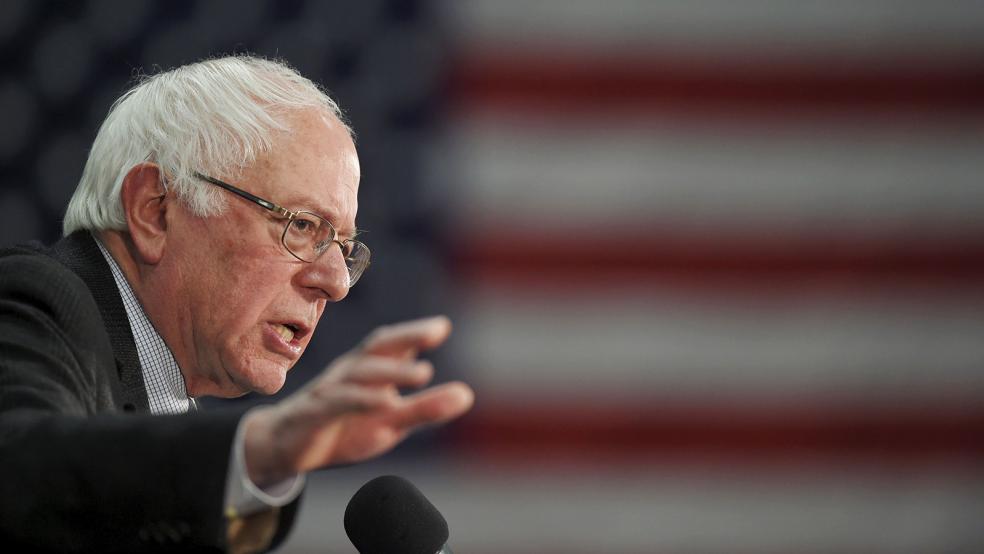Sen. Bernie Sanders of Vermont has vowed to soak the rich and the “billionaire class” to finance his grand schemes for universal health care, free college tuition, family leave and major infrastructure projects. The self-described democratic socialist has spelled out an elaborate restructuring of the tax code to raise the many trillions of dollars in revenue he would need to finance his social and governmental “revolution” and begin to redistribute the country’s wealth.
The latest analysis of the Democratic presidential candidate’s tax proposals, issued Friday by the joint Tax Policy Center of the Urban Institute and Brookings Institution, concluded that Sanders would spread the pain of higher taxes across the board, but with the wealthiest 0.1 percent of Americans getting hit with an average increase of more than $3 million in 2017 – or nearly 45 percent of their $6.9 million average after-tax income.
Related: Clinton’s Tax Hikes on the Rich Could Raise $1.1 Trillion Over 10 Years
Overall, Sanders’ plan would raise $15.3 trillion over the coming decade and an additional $25.1 trillion over the subsequent 10 years, according to the analysis. By contrast, the tax increase proposals being floated by Democratic presidential frontrunner Hillary Rodham Clinton that target the wealthiest sliver of taxpayers would generate $1.1 trillion in revenues over the first decade, according to a separate analysis by the tax policy center.
Clinton, like Sanders, would use the fresh revenue to help offset the cost of spending programs to largely help the middle class, although her proposals are far less ambitious and costly than those of her opponent. Even so, both proposals would run into unyielding opposition on Capitol Hill, where Republicans are far more interested in tax cuts than massive tax increases.
“There is a very, very clear choice,” said Len Burman, director of the nonpartisan Tax Policy Center, told reporters today. “They really couldn’t be more different . . . Bernie Sanders is very open about raising taxes on everybody, with the argument that people at all income levels are going to be benefiting from the new spending programs that he’s proposing.”
Sanders’s proposals would sharply raise the rates of federal income and payroll taxes and estate taxes while for the first time imposing taxes on Wall Street financial transactions and on carbon emissions. Taken together, Sanders’s proposals if enacted would raise Americans’ tax burden by an average of nearly $9,000 a year, and in the process lower average after-tax income by 12.4 percent, according to the report.
Related: Trump’s Tax Cuts Would Add $24.5 Trillion to the Debt
And while the very highest-income taxpayers would be hardest hit, households in the middle quintile of income distribution would suffer an average tax increase of almost $4,700, or 8.5 percent of their average after-tax income. Even those in the bottom quintile would get nicked by the plan, incurring small tax increases averaging $165, or 1.3 percent of their average after-tax income.
Sanders has defended his approach as a way of addressing years of middle class income inequality, when the vast majority of new wealth went to the richest one percent of Americans. He also argues that while a large chunk of the tax increase would be necessary to underwrite the cost of his proposed “Medicare for All” national health care plan, average Americans would experience a net savings on health care because they no longer would have to pay premiums and co-payments on health insurance they receive through their employers or the Affordable Care Act.
A number of liberal economists dispute Sander’s health care cost projections and say that his numbers don’t add up. Burman said today that his new report on Sanders’ tax plan doesn’t account for the impact on income of new government programs like “Medicare for All.”





